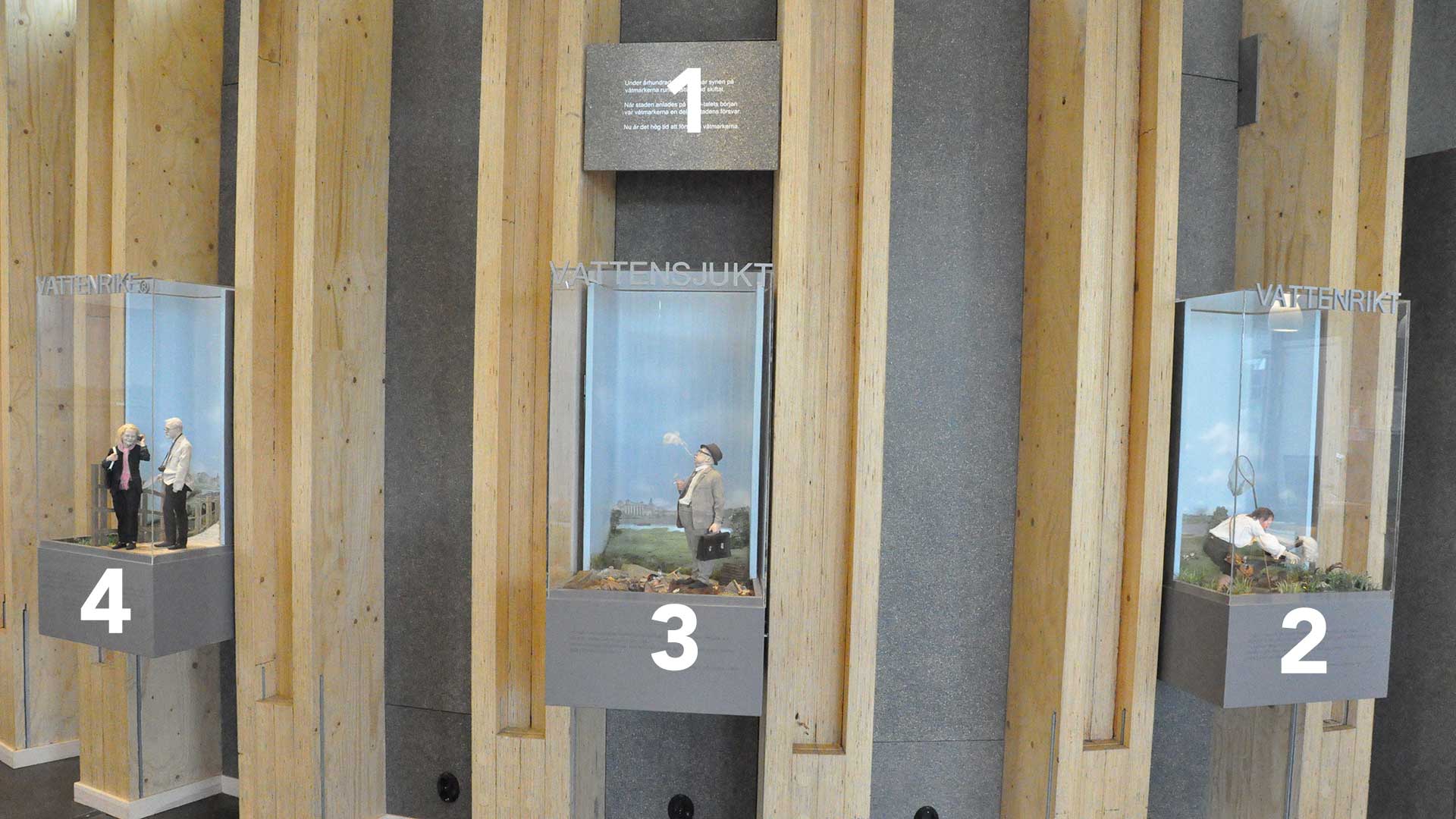
Read
1. Over the centuries attitudes to the wetlands have changed. When Kristianstad was founded in the early 1600s, the wetlands formed part of the city’s defences.
Now the time has come to defend the wetlands themselves.
2. The USE of water 1947
“A river, the Helge å, runs beside the city and girds it with its waters. A low-lying expanse of grassland, a league from side to side, surrounds the town and each summer provides pleasant green pasture.
“Here the fen ragwort, Senecio paludosus, flourishes, illuminating its surroundings with its yellow flowers. I have never previously seen this plant in Sweden.”
Carl Linnaeus, Scanian Journey, 1749.
3. The misuse of water 1958
“The Public Health Committee believes that the waterlogged swamps pose a health risk and should be cleared […] provided that this does not result in any inconvenience and that the adjacent rubbish tip is managed in an acceptable manner.”
Municipal Public Health Committee, 1958.
4. The wise use of Water today
“Kristianstads Vattenrike Biosphere Reserve gives us the opportunity to conserve and develop a valuable natural environment close to the heart of central Kristianstad.”Helene Fritzon 2005, in an informative brochure about the Biosphere Reserve.
“The naturum information centre will serve as a fantastic resource that adds to the appeal of Kristianstad for residents and visitors alike.”
Bengt Gustafson, 2008, Tidningen Kristianstad, municipal newsletter.
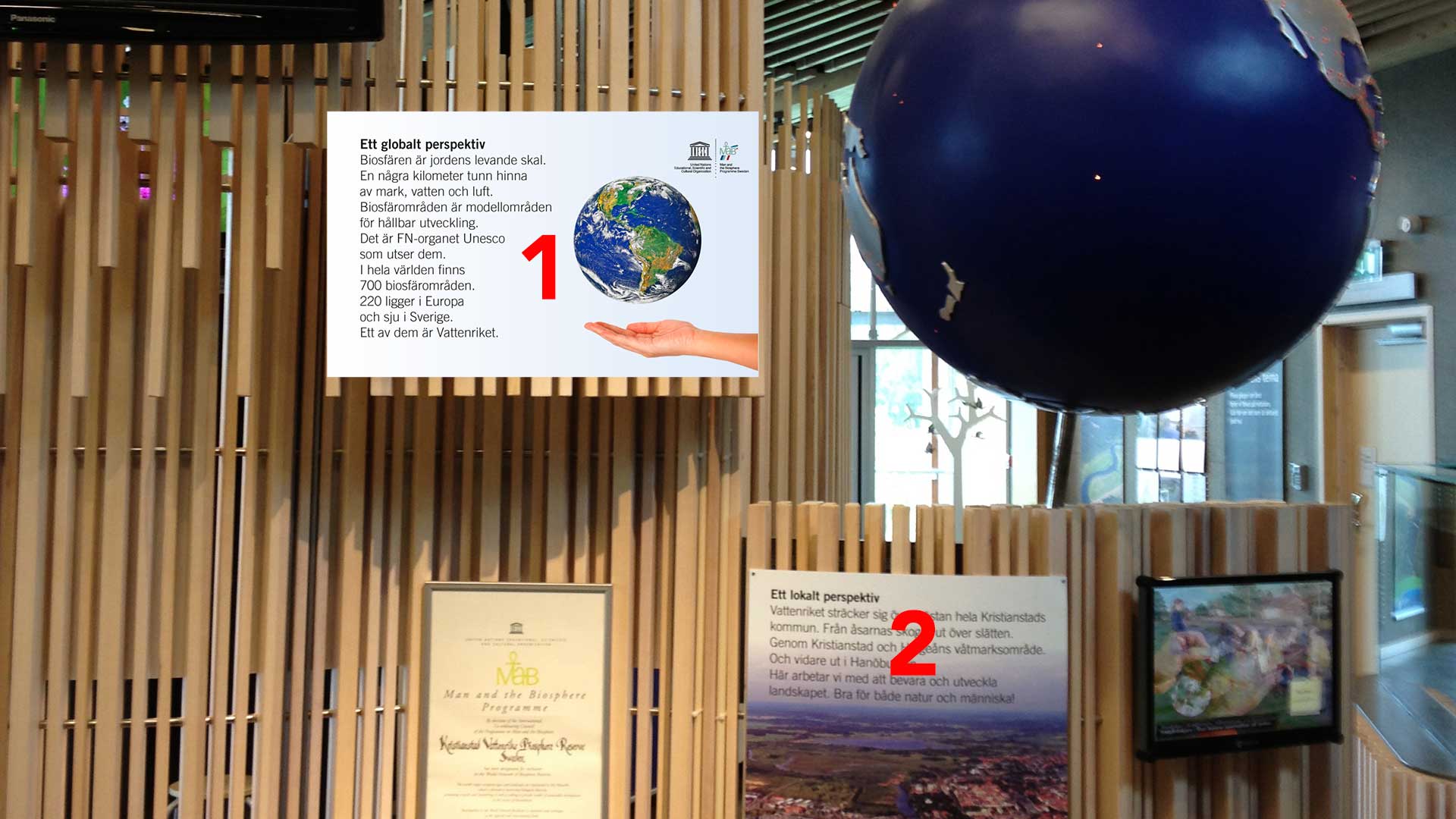
Read
1 A global perspective
The biosphere is the fragile “zone of life” on, above and below the surface of the Earth – a layer of soil, air and water just a few kilometres in thickness. Biosphere reserves are model regions for sustainable development, approved by the UN agency, UNESCO. There are 700 biosphere reserves worldwide: 220 of them are in Europe, including seven in Sweden. Kristianstads Vattenrike is one of Sweden’s biosphere reserves.
2 A local perspective
Kristianstads Vattenrike Biosphere Reserve extends over almost the entire area of the Municipality of Kristianstad. From the
forests on the ridges down to the plains, through Kristianstad itself and the wetlands of the River Helge å, and on to the sea in Hanöbukten Bay.
It is here that we are working to conserve and develop the region’s natural values – in the interests of both nature and people.

Read
Explore Kristianstads Vattenrike!
1 Visitor sites in Kristianstads Vattenrike
Unforgettable experiences await you all year round in Kristianstads Vattenrike. There are visitor sites throughout the area, with observation towers, boardwalks and outdoor museums – many of them accessible for wheelchair users.
2 The sign changes according to season
Summer in Vattenriket
1, 11, 13. Follow the Linnérundan Trail to Lillö Castle.
22. Combine birdwatching with the sun and sea at Äspet.
19. Enjoy the unique flora of the open sandy grasslands at Sånnarna.
1. Follow the boardwalk to the Årummet Outdoor Museum.
1. Take a boat trip through Vattenriket on the River Helge å.
7. Explore Forsakar’s deep ravine and its wild waterfalls.
11. Visit the Kanalhuset Outdoor Museum and fish from the jetty.
20. Fish, picnic and marvel at the river water crowfoot at Vramsån.
Canoe on the River Helge å past reeds, willows and grasslands.
Autumn in Vattenriket
1, 11, 13. Observe the birds at Isternäset on the Linnérundan Trail.
11. Visit the Kanalhuset Outdoor Museum and fish from the jetty.
3. Climb Balsberget Hill to enjoy the view over Lake Råbelövssjön.
7. Explore Forsakar’s deep ravine and its wild waterfalls.
1. Follow the boardwalk to the Årummet Outdoor Museum.
Winter in Vattenriket
21. Scan the sky for eagles from the tower at Norra Åsum.
1. Look out for otters, fishing for food by the naturum.
1. Catch a glimpse of a kingfisher close to the naturum.
1. Follow the boardwalk to the Årummet Outdoor Museum.
1, 11, 13. Walk the Linnérundan Trail across the seasonally flooded grasslands.
Spring in Vattenriket
1, 11, 13. Walk the Linnérundan Trail across the seasonally flooded grasslands.
16. Enjoy wood anemones and birdsong at Norra Lingenäset.
17. See the cranes at the Pulken Outdoor Museum.
1. Follow the boardwalk to the Årummet Outdoor Museum.
7. Explore Forsakar’s deep ravine and its wild waterfalls.
Early summer in Vattenriket
1,11,13. Follow the Linnérundan Trail to Lillö Castle.
9. Explore the meadows around the Hercules Outdoor Museum.
5. Enjoy the lakeside forests at Ekenabben.
1. Take a boat trip through Vattenriket on the River Helge å.
10. Watch the birds at Håslövs ängar.
7. Roam through Forsakar’s forests as the leaves come to life.
4. Stroll over the lovely rolling hills of Degeberga backar.
7. Follow the boardwalk to the Årummet Outdoor Museum.

Read
1 Lake Hammarsjön
The aquarium shows the scene above and below the surface of Lake
Hammarsjön, a shallow, nutrient-rich steppe lake, 10 km long and 4 km wide. On the eastern shore is a large bay, Herculesviken. Above the surface of the lake you can see Gustav Adolf’s Church in Viby; below the surface are some of the fish that inhabit the lake.
The water level in the lake varies as the seasons change. In summer it is not much deeper than here in the aquarium; in winter the water rises and the lake becomes twice as deep. Well into the 1990s there were numerous thick clumps of rushes in the lake, offering a steady supply of food for fish, ducks, geese and gulls. Today, however, the rushes have almost entirely vanished.
2 Fishing in Lake Hammarsjön
A hundred years ago seven fishermen made a living from the fish they caught in Lake Hammarsjön. Up until the mid-1900s pike caught here were exported to France to be made into paté. Today the only people who fish in the lake are anglers in their leisure time.

Read
At least 38 different species of fish – 32 of them freshwater species – have been caught in the
rivers, lakes and inshore waters of Kristianstads Vattenrike. The large number of species is due to the rich variety in the types of aquatic
environment.
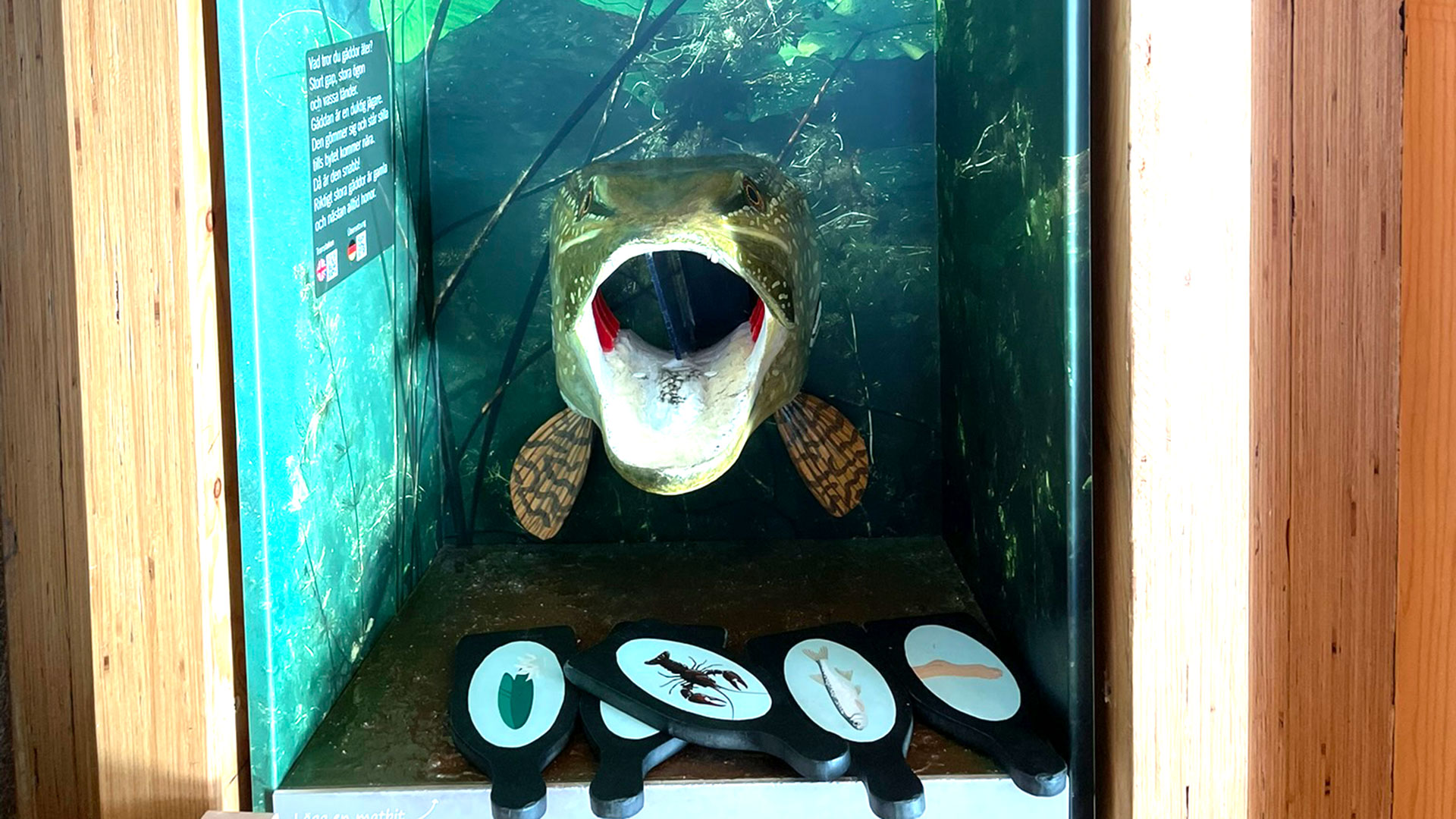
Read
What do you think the pike eats?
Big gap, big eyes
and sharp teeth.
The pike is a good hunter.
It hides and stands still
until the prey comes near.
Then it’s fast!
Really big pikes are old and almost always females.
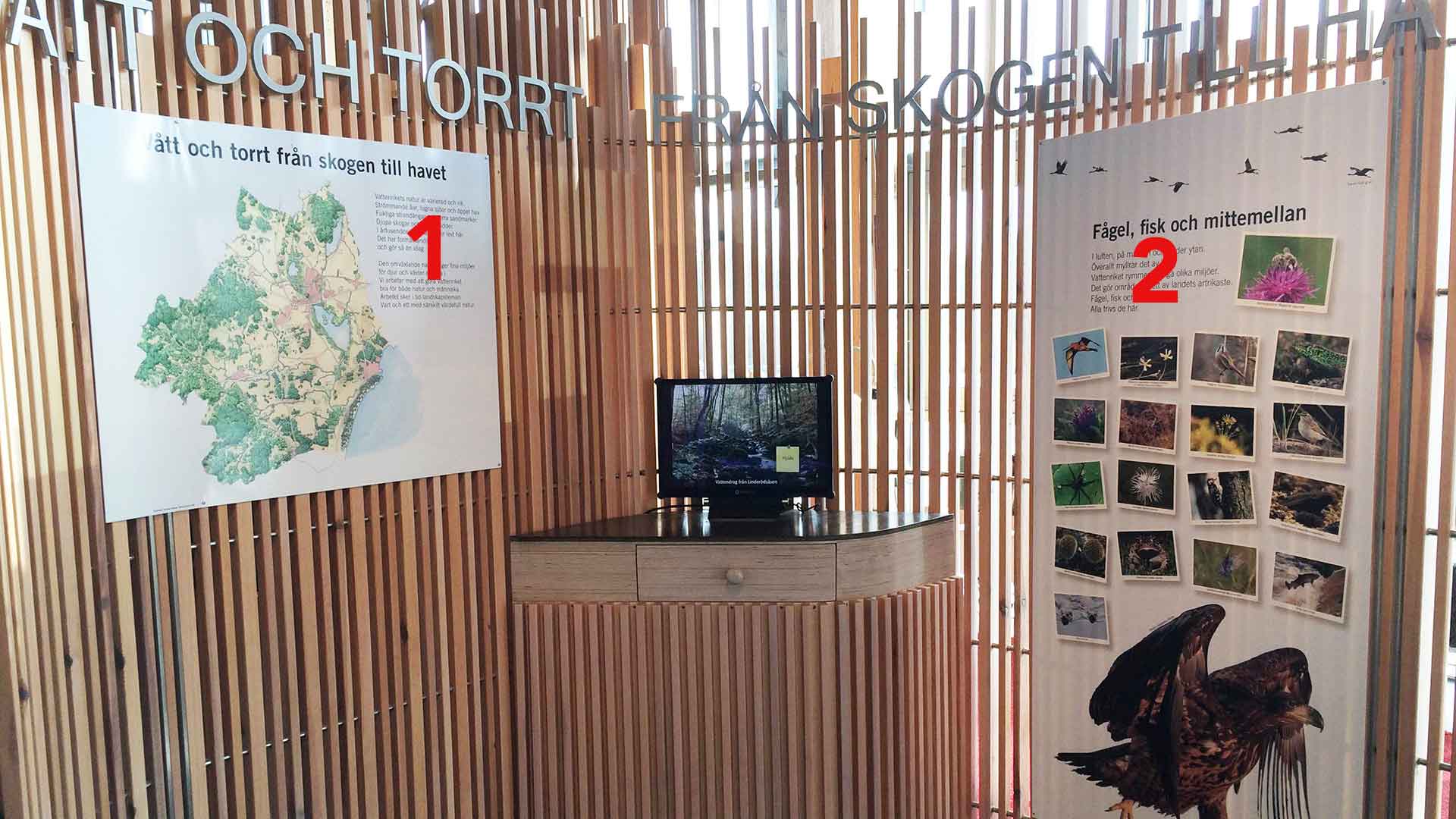
Read
1 Landscapes wet and dry – from the forests to the sea
Nature in Kristianstads Vattenrike is rich and diverse – majestic rivers, babbling brooks, tranquil lakes and the open sea. Seasonally flooded grasslands and dry sandy grasslands. Dense forests and wide open spaces.
People have been living here for millennia. They have shaped the landscape and continue to do so today.
Such varied natural surroundings provide wonderful habitats for flora and fauna.That is why we are working hard to ensure that Kristianstads Vattenrike benefits both nature and people. Our work focuses on ten landscape themes, each one of which represents a particularly precious natural value.
2 All creatures great and small
In the air, on the ground and below the surface – everywhere is teeming with life. Kristianstads Vattenrike provides many different habitats for flora and fauna. This is what makes it one of Sweden’s most species-diverse areas.A home for creatures great and small. A haven.
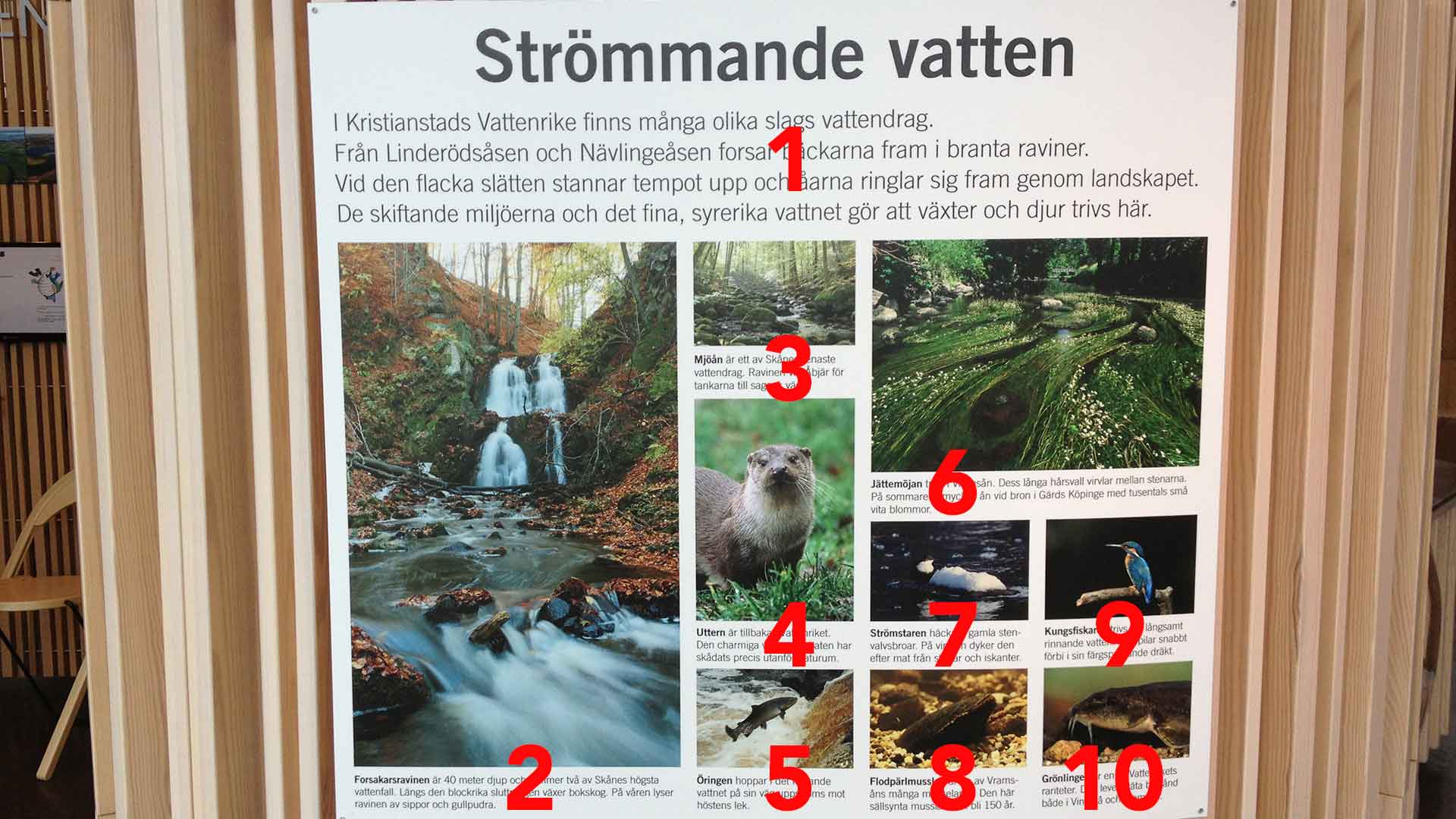
Read
1 Flowing waters
There are many different kinds of watery environments in Kristianstads Vattenrike Biosphere Reserve. Streams tumble from the high ground along the Linderödsåsen and Nävlingeåsen ridges and plunge into steep ravines before reaching the plain below and then meandering slowly through the flat landscape. These varied environments and the healthy, oxygen-rich water provide a good habitat for both flora and fauna.
2 The ravine at Forsakar is 40 metres deep and has two of the highest waterfalls in Skåne. Beech trees grow on the boulder-strewn slopes and in spring the ravine is carpeted with wild anemones and golden saxifrage.
3 The River Mjöån has some of the purest water in all of Skåne. The ravine at Åbjär is almost like something out of a fairy tale.
4 The otter has returned to Kristianstads Vattenrike. This charming aquatic acrobat has been spotted just metres from the naturum visitor centre.
5 The brown trout leaps from the rushing waters on its way upstream to its autumn spawning grounds.
6 The river water-crowfoot enjoys ideal conditions in the River Vramsån, its long tresses swirling among the stones. In summer the river by the bridge in Gärds Köpinge is festooned with thousands of tiny white flowers.
7 The dipper nests in old arch bridges. In winter it dives for food from its perch on stones and at the edge of the ice.
8 The freshwater pearl mussel is one of many species of mussel in the River Vramsån. This rare mussel can live to be up to 150 years old.
9 The kingfisher prefers slow-flowing waters. You can catch a glimpse of its brilliantly coloured plumage as it darts quickly above the river.
10 The stone loach is one of the rarities of Kristianstads Vattenrike. It lives amid dense weeds in the River Vinne å and Vramsån.
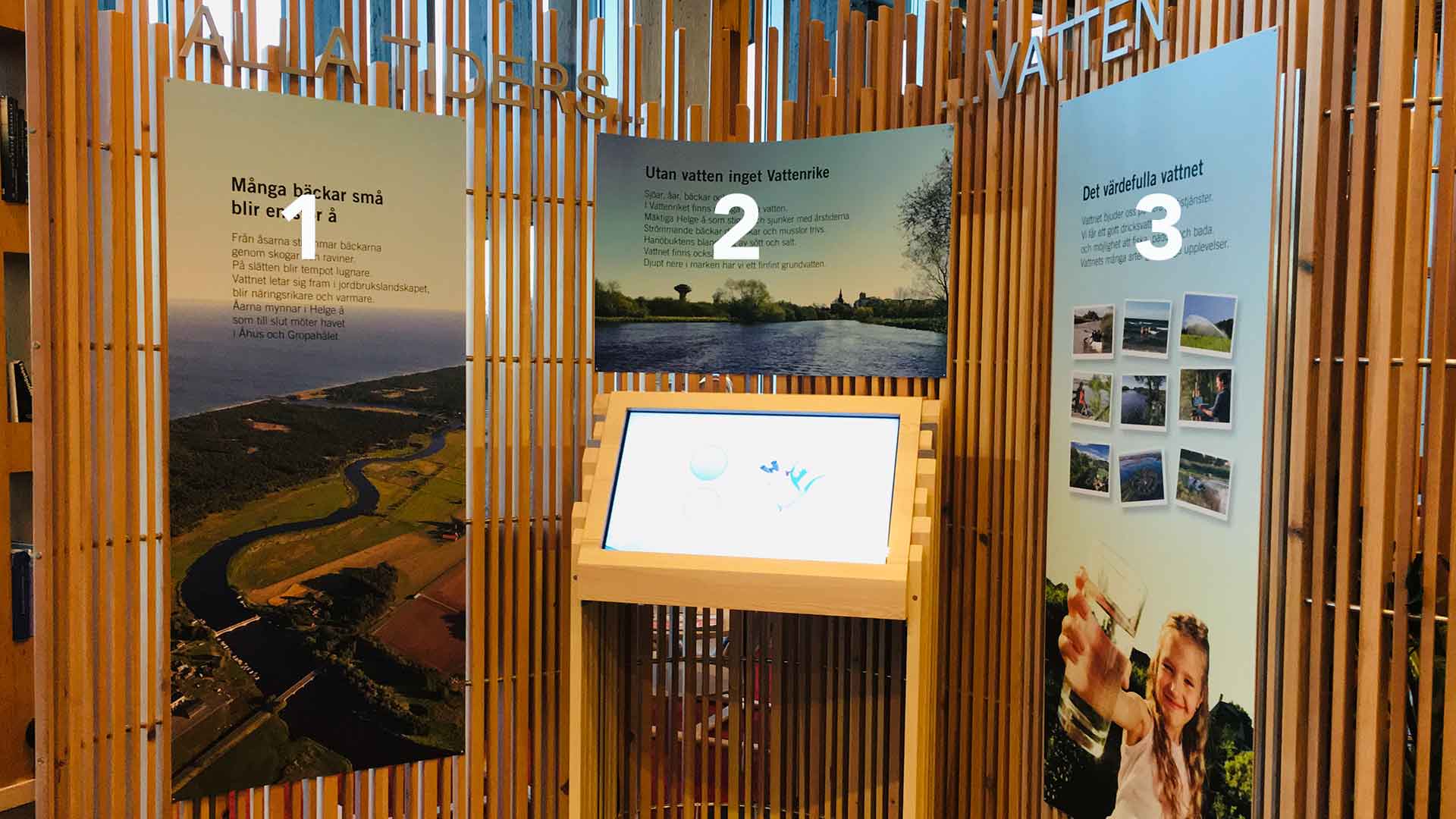
Read
1. Big rivers from small streams flow
The streams tumble down the ridges
through forests and ravines.
On the plain their pace becomes more leisurely.
Winding their way through the farmlands,
they are enriched with nutrients
and grow warmer as they join the River Helge å
on its long, meandering journey to the sea
in Åhus and at Gropåhålet.
2. Water is Vattenriket’s lifeblood
Lakes and rivers, streams and sea.
Water breathes life into Kristianstads Vattenrike.
The mighty River Helge å rises and falls with the seasons.
Fish and mussels thrive in the fast-flowing streams.
Freshwater takes on the tang of salt in Hanöbukten Bay.
And below us, deep down in the bedrock,
is some of the purest groundwater in all of Sweden.
3. So much water, so many values
Water in all its many forms gives us so much –
from pure, life-giving drinking water
to countless leisure opportunities
for fishing, canoeing, bathing and more besides.
